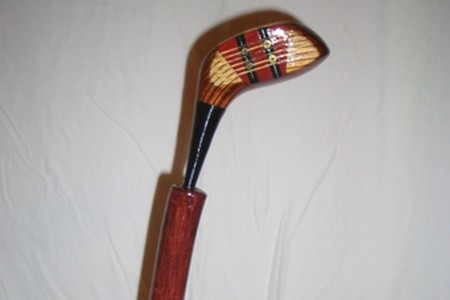Choosing the right clubheads is becoming increasingly difficult because of the vast range of models available. Classic shapes slowly disappear and make room for carefully engineered forms with specific functions. A couple of years ago, it appeared that clubhead materials dictated the shape they were to take, as not all functions could be incorporated into all materials. But today technology has advanced to a stage where you can choose your favourite clubhead shape and buy it in almost any material you fancy.
There are basically two things you want to be mindful of in choosing your clubhead shape. The first and foremost is aesthetics. In other words, you must like what you see. You can purchase the most expensive, game-improvement club you can find, but unless you like the looks of it, it won’t do your game any good. Golf is as much a game of the mind as it is of the body, if not more so, that is why your clubs must make you feel comfortable and give you confidence.

The other consideration is, of course, compatibility. Golf clubs today are precision tools, designed with special groups of handicappers in mind. And like good tools, good golf clubs are quite useless unless you can handle them. As a rule of thumb, the lower your handicap, the bigger your choice in the pro shop, and vice versa. Let’s look at the shape of woods first.
Classic Drivers and Fairway Woods
You know, of course, that the shafts of your driver and fairway woods are longer than those of your irons, providing you with a wider swing arc, and more clubhead speed. But the wider arc also means that your clubhead has to travel farther to reach the ball at impact, which in turn makes it less likely that you hit the ball precisely every time. To compensate for this inaccuracy, club manufacturers started years ago to produce drivers and woods with an expanded sweet spot.
The sweet spot is actually the area of the clubface with which the ball should ideally be struck at impact for a straight and high trajectory. In the traditional wooden clubs the mass of the material, and thus the weight, is concentrated behind the sweet spot. This allows good golfers to play very efficiently with the classic clubs.
Perimeter-Weighted Woods
To increase the sweet spot for golfers of lesser ability, club manufacturers manipulated the weight of the clubs. Metal soles and inserts were used in traditional woods to lower the centre of gravity, which in turn helps to improve the clubhead speed and to get the ball airborne.
Clubmakers experimented first with heel-to-toe weighing in the 1960s. As it turned out, this feature actually helped to correct the flight of mis-hit balls, but it proved not good enough, and the perimeter-weighted club was invented.
In the perimeter-weighted clubhead, the weight is distributed around the edges of the club, providing golfers with a larger sweet spot and a more forgiving club. Although the first of these clubs were metal-headed woods, today there are even perimeter-weigh ted persimmon woods on the market, in which the clubhead is filled with a lighter material.
Oversized Perimeter-Weighted Woods
To extend the hitting area, the clubface became longer, and the head more prominent and bigger. Modern clubheads are up to twice the size of conventional models. The first oversized club that captured the public’s imagination was Callaway’s stainless steel-headed Big Bertha. Ever since clubmakers have struggled to keep up with demand.
Although I don’t believe that the oversized perimeter-weighted wood allows you to hit the ball farther, it certainly lets your mis-hit ball travel in a straighter line. However, if the clubhead is very large, the aerodynamics may work against you, and lower your clubhead speed, thereby undoing at least some of the advantages you tried to gain with this sort of club in the first place.